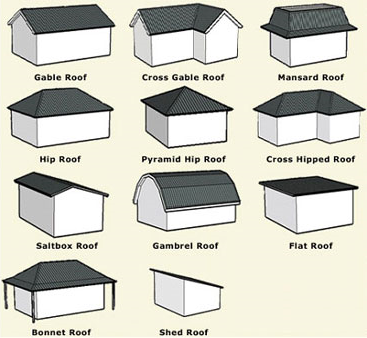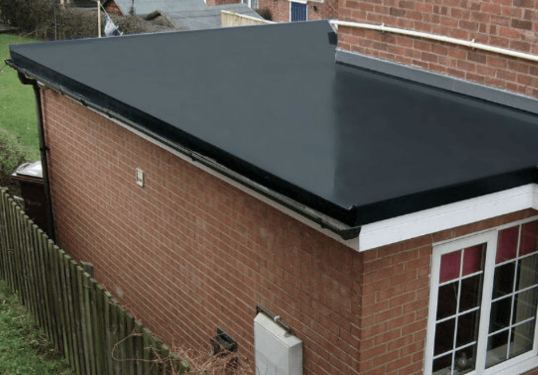Have you ever wondered about those unique rooftops that combine the flatness of a traditional flat roof with the slight incline of a sloped roof? They have a fascinating name that perfectly captures their design – they are called “low slope roofs” or “low pitch roofs.” These innovative structures offer the best of both worlds, providing the durability and practicality of a flat roof while also ensuring efficient water drainage with their gentle slope. In this article, we will explore the benefits and considerations of low slope roofs, shedding light on this intriguing roofing option.

What is a flat roof with a slope called?
A flat roof with a slope is commonly referred to as a “low-slope” or “steep-slope” roof, depending on the angle of the slope. This type of roof combines the benefits of a flat roof, such as affordability and easy maintenance, with the advantages of a sloped roof, such as improved drainage and increased durability. In addition to the low-slope and steep-slope roofs, there are also other variations, such as the monopitch roof and the shed roof, which offer unique design possibilities for different architectural styles. When considering a flat roof with a slope, there are several important factors to take into account, including drainage, structural integrity, material selection, and maintenance requirements. Despite the numerous advantages of this type of roof, there are also some challenges that need to be addressed. By understanding the various aspects involved in designing and constructing a flat roof with a slope, you can make informed decisions and create a functional and aesthetically pleasing roofing solution for your needs.
1. Introduction
Flat roofs with a slope are a popular roofing option that combines the benefits of both flat roofs and sloped roofs. This type of roof offers a practical and cost-effective solution, providing improved drainage and increased durability compared to traditional flat roofs. By incorporating a slight slope, water is redirected towards the gutters, minimizing the risk of ponding and potential leaks. Additionally, the steepness of the slope can be adjusted to suit specific design requirements and local climate conditions.

2. Definition of a Flat Roof with a Slope
A flat roof with a slope refers to a roofing system that has a slight incline, allowing for efficient water drainage. Unlike traditional flat roofs, which are entirely level, the addition of a slope helps prevent water from accumulating and causing damage. The slope is typically achieved by incorporating tapered insulation or by installing additional materials, such as crickets or sleepers, to redirect water toward the drains. This design approach combines the affordability and versatility of a flat roof with the functional advantages of a sloped roof.
3. Advantages of a Flat Roof with a Slope
There are several advantages to choosing a flat roof with a slope for your building:
-
Improved drainage: The main advantage of a flat roof with a slope is its enhanced drainage capabilities. By incorporating a slope, water is directed towards the gutters and drains more effectively, reducing the risk of ponding and leaks. This helps to prolong the lifespan of the roof and minimizes the maintenance requirements.
-
Increased durability: Compared to traditional flat roofs, which are prone to water damage and structural issues, a flat roof with a slope offers increased durability. The sloping design helps to shed water more efficiently, preventing it from pooling and causing potential damage. This increased durability can result in a longer lifespan for the roof and reduced maintenance costs over time.
-
Aesthetic appeal: Flat roofs with a slope offer a visually appealing alternative to traditional flat roofs. The addition of a slope can create a more dynamic and interesting roofline, adding architectural interest to your building. This design feature can enhance the overall aesthetic appeal of your property and increase its curb appeal.
-
Design flexibility: The inclusion of a slope in a flat roof design allows for greater design flexibility. The angle of the slope can be adjusted to meet specific design requirements and aesthetic preferences. This versatility opens up a range of possibilities for architects and homeowners, allowing them to create unique and visually striking roof designs.

4. Types of Flat Roofs with a Slope
There are several different types of flat roofs with a slope, each offering its own unique characteristics and benefits. These include:
4.1 Low-Slope Roof
A low-slope roof refers to a roof with a gentle slope, typically ranging from 1:12 to 4:12. This type of slope is ideal for buildings with limited height restrictions, as it provides efficient water drainage while still maintaining a relatively flat appearance. Low-slope roofs are commonly used in commercial buildings, residential properties, and industrial facilities.
4.2 Steep-Slope Roof
A steep-slope roof features a more pronounced slope, typically greater than 4:12. This type of roof is commonly found in residential buildings, as it provides a more traditional and aesthetically pleasing appearance. The steeper slope allows for efficient water drainage, reducing the risk of leaks and water damage. Steep-slope roofs can be constructed using various materials, such as asphalt shingles, metal, or tile, depending on the desired appearance and budget.
4.3 Monopitch Roof
A monopitch roof, also known as a shed roof, is characterized by a single slope. This type of roof design is commonly used in modern architecture, as it offers a sleek and minimalist aesthetic. Monopitch roofs are often used in residential properties, commercial buildings, and even outdoor structures such as pavilions or carports. The slope of the roof can be adjusted to suit specific design requirements and desired water drainage.
4.4 Shed Roof
Similar to a monopitch roof, a shed roof also features a single slope. However, shed roofs typically have a steeper slope, making them suitable for areas with heavy snowfall or high rainfall. Shed roofs are commonly used in residential buildings, barns, and storage sheds. The steep slope of this type of roof allows for efficient water drainage and reduces the risk of leaks or water damage.
5. Considerations for Designing a Flat Roof with a Slope
When designing a flat roof with a slope, there are several important considerations to take into account to ensure a successful and functional roofing system. These considerations include:
5.1 Drainage
One of the primary considerations when designing a flat roof with a slope is efficient drainage. Proper drainage is essential to prevent water from ponding and causing structural damage or leaks. The slope of the roof should be carefully calculated to ensure that water is directed towards the gutters and drains. Additionally, the incorporation of tapered insulation or additional materials, such as crickets or sleepers, can help redirect water flow and prevent any areas of standing water.
5.2 Structural Integrity
The structural integrity of the building must be carefully evaluated when designing a flat roof with a slope. The additional weight of the roof materials, as well as any potential snow or water accumulation, must be taken into consideration. It is essential to consult with a structural engineer to ensure that the building can support the added load of the sloped roof. Reinforcement may be required to ensure the safety and stability of the structure.
5.3 Material Selection
The selection of roofing materials is another crucial aspect of designing a flat roof with a slope. The chosen materials should be able to withstand the effects of water drainage, UV exposure, and other environmental factors. Common materials used for flat roofs with a slope include built-up roofing (BUR), single-ply membranes, modified bitumen, metal, and asphalt shingles. The selection of materials will depend on factors such as budget, climate, and desired aesthetics.
5.4 Maintenance
Maintenance requirements should also be taken into consideration when designing a flat roof with a slope. While this type of roof offers improved drainage and durability, regular maintenance is still necessary to ensure its longevity. Inspections should be conducted at regular intervals to check for any signs of damage, such as cracks, leaks, or loose materials. Any necessary repairs should be addressed promptly to prevent further damage. Additionally, keeping the gutters and drains clear of debris is essential to maintain efficient water flow.

6. Challenges of Flat Roofs with a Slope
While flat roofs with a slope offer numerous advantages, there are also some challenges that need to be considered. One common challenge is ensuring proper insulation and vapor barrier installation. The slope and design of the roof may require special attention to avoid thermal bridging and moisture issues. Additionally, the complex design of a flat roof with a slope can result in increased construction costs. The additional materials and labor required for the sloping design can add to the overall project expenses. It is important to carefully plan and budget for these potential challenges to ensure a successful roofing system.
7. Common Uses of Flat Roofs with a Slope
Flat roofs with a slope are commonly used in a variety of building types and architectural styles. Some common uses include:
-
Residential buildings: Many modern residential properties incorporate flat roofs with a slope for their aesthetic appeal and functional advantages. The design flexibility of flat roofs with a slope allows homeowners to create unique and visually striking rooflines that complement the overall architectural style of their homes.
-
Commercial buildings: Flat roofs with a slope are frequently used in commercial buildings due to their cost-effectiveness and improved drainage capabilities. The durability and versatility of this type of roofing system make it suitable for a wide range of commercial applications, including office buildings, retail stores, and warehouses.
-
Industrial facilities: Flat roofs with a slope are also commonly found in industrial facilities, such as manufacturing plants or storage warehouses. The enhanced drainage and increased durability of this type of roof make it ideal for these high-demand environments.
-
Outdoor structures: Flat roofs with a slope are not limited to buildings. They are also commonly used in outdoor structures such as pavilions, carports, and covered walkways. The versatility and design flexibility of this roofing system make it suitable for various outdoor applications.

8. Conclusion
A flat roof with a slope offers an attractive and practical roofing option that combines the advantages of both flat roofs and sloped roofs. With improved drainage capabilities and increased durability, this type of roof provides an excellent solution for both residential and commercial buildings alike. The various types of flat roofs with a slope, such as low-slope, steep-slope, monopitch, and shed roofs, offer design flexibility for different architectural styles and preferences. When designing a flat roof with a slope, factors such as drainage, structural integrity, material selection, and maintenance requirements should be carefully considered. While there are some challenges associated with this type of roof, proper planning and budgeting can help overcome these obstacles. Overall, a flat roof with a slope offers an aesthetically appealing and functional roofing solution that can enhance the durability and longevity of your building while adding architectural interest.